#heartleaf foamflower
Text





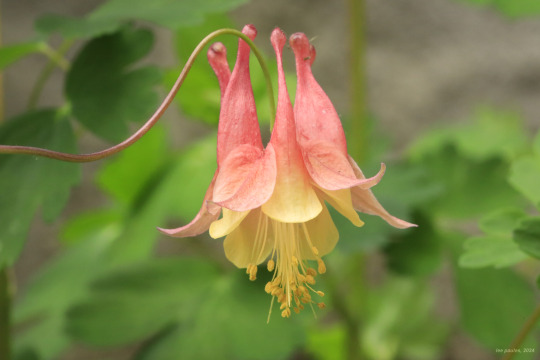
Update from the native wildflower beds: the creeping woodland phlox (Phlox stolonifera) is now in full, vigorous bloom. This graceful, shade-loving perennial has a mat-forming habit that makes it an ideal ground cover. The plant's hairy, red-tinged stems, which sport delicate, spoon-shaped leaves, spread freely and need an occasional manicure to keep them from taking over. Also in bloom are the heartleaf foamflower (Tiarella cordifolia) and eastern red columbine (Aquilegia canadensis), whose tall, elegant flowering stalks are producing masses of flowers (it must like the location). The wild geranium is also loaded up with flowers (photos to come).
#appalachia#vandalia#west virginia#wildflowers#flora#spring#native plants#native wildflower garden#creeping phlox#creeping woodland phlox#heartleaf foamflower#eastern red columbine
66 notes
·
View notes
Text
Wild Flowers





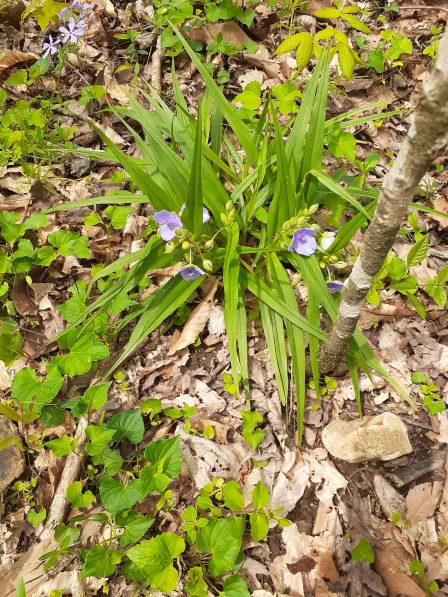



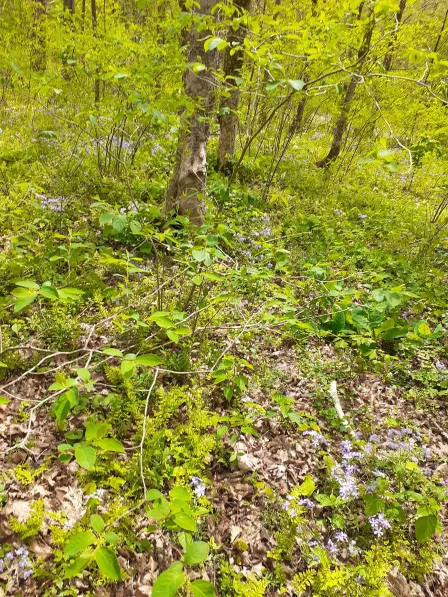


First Image: Spreading Jacob’s ladder
Second Image: A field of Spreading Jacob’s ladder
Third Image: A mixture of Spreading Jacob’s ladder and Blue Phlox
Forth Image: Dwarf Larkspur
Fifth Image: A field of Spreading Jacob’s ladder
Sixth Image: Tradescantia 'Ocean Blue'
Seventh Image: Tradescantia 'Ocean Blue' along with Blue Phlox
Eighth Image: Blue Phlox
Ninth Image: Blue Phlox
Tenth Image: Blue Phlox
Eleventh Image: Mayapple and some Blue Phlox
Twelveth Image: Blue Phlox, Striped Cream Violet, Common Blue Violet, and Heartleaf Foamflower
#nature#woods#forest#flowers#purple flowers#blue flowers#trees#spring#early spring#my photos#spreading jacobs ladder#blue phlox#dwarf larkspur#tradescantia#mayapple#striped cream violet#common blue violet#heartleaf foamflower
11 notes
·
View notes
Text
FadingFlea’s kits
minus StumpPaw because I wasn’t sure what to put! Feel free to add/ask to change anything liber :) (@liberhoe @residents-of-the-darkforest-of-the-darkforest @ambitiousauthor )
AmaranthKit
gender: Molly
sexuality: lesbian
Characteristics: has a collection of beetle exoskeletons, indifferent, quiet, very chill, witty
Favourite plant: yellow harlequin
Adult name: AmaranthTuft
RoseWoodKit
Gender: Molly
Sexuality: straight
Characteristics: well-rounded, assured, hopeless romantic, forgetful, has a collection of pebbles, joyful, hesitant, troublesome
Favourite plant: wood blewit mushrooms
Adult name: RosewoodSpring
RaspberryKit
Gender: Tom
Sexuality: ?
Characteristics: runt, generous, delicate, working to improve his herb collecting, has moss in his fur, outspoken,
Favourite plant: heartleaf foamflower
Adult name: RaspberryThorn
PoppyKit
Gender: Molly
Sexuality: demiromantic
Characteristics: predictable, working to improve her climbing, best friend is CandyKit, adventurous, excitable
Favourite plant: sunshine columbine
Adult name: PoppyPerch
FishKit
Gender: trans Tom
Sexuality: gay
Characteristics: quiet, sweet, munchkin singapura mix, chronic leg pain, dreamy, favourite colour is lime, loves water because it’s the one time his legs don’t hurt, excitable, cowardly, sympathetic
Favourite plant: northern bedstraw
Adult name: FishDrop
TawnyKit
Gender: Molly
Sexuality: ?
Characteristics: standoffish, impatient, sarcastic, gentle, bossy, poor vision and no nightvision, envious, admirable, hates snow and water, good at navigating
Favourite plant: zinnia
Adult name: TawnyTrot
JellyKit
Gender: Molly
Sexuality: ?
Characteristics: thoughtful, wants to be a leader, munchkin mix, has dreams about Starclan, organized, big-thinking
Favourite plant: deadnettles
Adult name: JellyMoss
PineNutKit
Gender: Tom
Sexuality: Pansexual
Characteristics: proud, talkative, wants to be skilled in story telling, munchkin mix, honest, skeptical, extreme, addictive (feels the need to collect anything)
Favourite plant: lambs cress
Adult name: PineNutPounce
6 notes
·
View notes
Photo



Tiarella cordifolia - Foamflower
#plant id#native plants#wildflowers#spring#bicolor leaves#variegated leaves#oxalis#foamflower#heartleaf foamflower#tiarella#tiarella cordifolia#flower spike#forest floor
5 notes
·
View notes
Photo
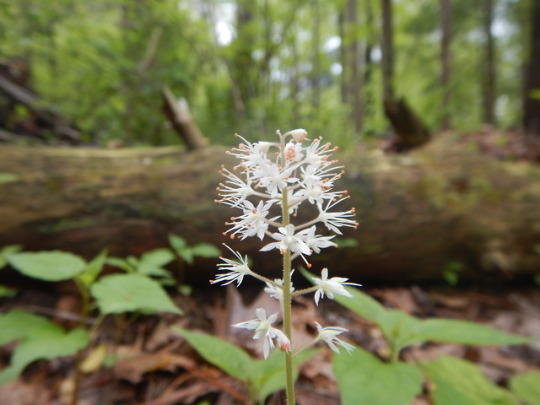

Heartleaf Foamflower
Tiarella cordifolia
23 notes
·
View notes
Photo

Feeling myself. Will probably delete later. (Okay, so i think these are Virginia spiderwort, yellow jessamine, bird’s foot violet, some crazy loblolly pine bark, mayapple, heartleaf foamflower, bloodroot, a native bamboo (native panda not pictured), a cool sedge, and red buckeye.) (at Chattahoochee Bend State Park) https://www.instagram.com/p/BvxvElPH7VR/?utm_source=ig_tumblr_share&igshid=1espr1x54zyx7
4 notes
·
View notes
Text
Perennials that Typically Overwinter Well in Containers
Achillea (Yarrow)
Ajuga (Bugleweed)
Alchemilla (Lady's Mantle)
Armeria (Common Thrift, Sea Pink)
Aster
Bergenia (Heartleaf Bergenia, Pig Squeak)
Brunnera macrophylla
Campanula (Bellflower)
Cerastium (Snow in Summer)
Clematis
Coreopsis (Tickseed)
Dianthus (Pinks)
Echinacea (Coneflower)
Ferns
Geranium (Hardy, Cranesbill)
Hemerocallis (Daylily)
Heuchera (Coral Bells)
Heucherella (Foamy Bells)
Hosta
Houttuynia (Chameleon Plant)
Iris ensata (Japanese Iris)
Lamium
Lysimachia nummularia (Creeping Jenny, Moneywort)
Lysimachia punctata (Variegated Loosestrife)
Myosotis (Forget-Me-Not)
Phlox subulata (Creeping Phlox)
Polemonium (Jacob's Ladder)
Primula (Primrose)
Pulmonaria (Lungwort, Bethlehem Sage)
Salvia (Perennial Salvia)
Scabiosa (Pincushion Flower)
Sedum (Stonecrop)
Sempervivum (Hen & Chicks)
Thymus (Creeping Thyme)
Tiarella (Foamflower)
Tradescantia (Spiderwort)
#https://www.waltersgardens.com/article.php?ID=109#garden info#perennials in pots#container gardening
1 note
·
View note
Text
Is Ground Cover the Right Choice for Your Yard?
A lush green lawn is most people’s go-to image for a gorgeous and well-maintained landscape. However, there are some landscapes where consistent grass coverage is particularly difficult – perhaps parts of the lawn are too shady or too dry for healthy grass to grow. If your landscape is struggling with grass coverage, an attractive solution could be planting some ground cover over these trouble spots.
Ground cover typically consists of mostly low-lying plants that provide a layer of protection for your topsoil. In addition to providing a more dynamic and colorful look to your landscape, ground cover can also be simpler to maintain than grass once it’s been established. Some ground cover plants, such as Bugleweed, Heartleaf Foamflower, or Orchid Frost, require less water than grass. Others, such as English Ivy or Pachysandra, can thrive in darker and shadier areas.
Ground cover also requires less trimming than grass. Some homeowners plant ground cover over steep, hilly parts of their landscapes for this very reason, as is it more difficult to run a lawnmower over a hilly landscape than a flat one.
Fall is the best time of year to plant ground covers, as they will more easily establish themselves in cooler temperatures. If you’re interested in a ground cover for your landscape, the best place to start is Borst. We can help you choose the ideal plants for your lawn, and craft a beautiful design to complement your unique landscape. Contact the experts at Borst today to get started.
The post Is Ground Cover the Right Choice for Your Yard? appeared first on Borst Landscape & Design.
from RSSMix.com Mix ID 8230377 https://ift.tt/2OSMHDM
via IFTTT
0 notes
Text
30 April through 4 May 2018
This week’s medicinal plant is Valeriana officinalis. I really like how it puts me into a very restful and deep sleep. I took a teabag to work so everyone could smell the unique aroma. My favourite is Dr. Stuart’s.
This was a fun and varied week. Monday, with incessant drizzle, I cut a new edge to some grass, making it look much better. There is a dip in the level, which gives the appearance of an indent, which I measured several times to ensure it is in fact parallel to a nearby edge.

Tuesday I had my first go at building supports for some of the larger plants, to prevent them toppling over under their own weight and ensure the best show possible of the impending blooms.
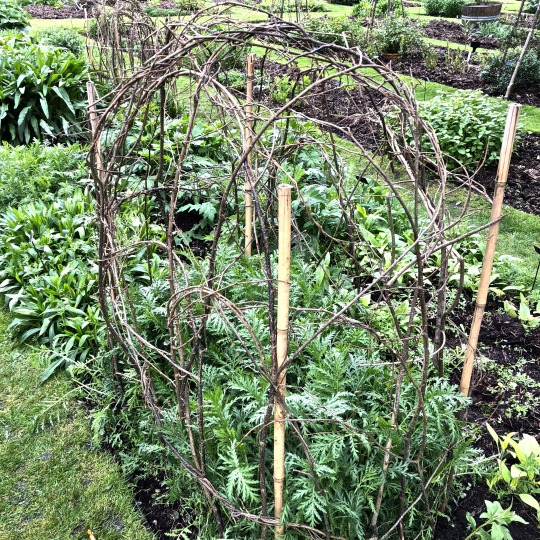
Wednesday was my office day. In the morning, during my glasshouse time, I planted some Marsilea quadrifolia, an aquatic fern, along the edge of one of the ponds in the fernery. I’m hoping it takes off quickly. I think it will look great.
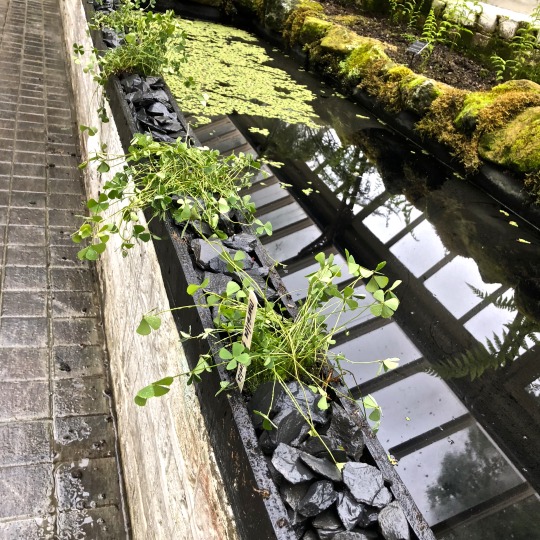
This week Joe announced he will be leaving the garden at the end of June to do some travelling and working in Australia for a year. Whilst this will be an amazing opportunity for him, we will miss him.
Thursday I constructed more supports with hazel canes, almost finishing the job. Friday, after helping Ruari and Joe extricate the citrus trees from their winter home in the orangery, I applied new gold-lettering to the medicinal information boxes.

There is no new ident this week because it is Ruari’s last week and the new trainee, Charlotte, will start on 14 May.
I made my way to Heathrow directly from work for my flight to Delhi and a week’s holiday in Uttarakhand, the area regarded as the seat of the Hindu god Shiva.
Plant of the week
Saxifragaceae Tiarella cordifolia L.

common name(s) - “foam flower”, “coolwort”, “false mitrewort”, “white coolwort”, “heartleaf foamflower”, “heartleaved foamflower”, “Allegheny foamflower”
synonym(s) - Tiarella cordifolia var. cordifolia; Tiarella cordifolia f. cordifolia
conservation rating - none
native to - eastern North America
location - world wood North America; accession _____
leaves - three to five-lobed, broadly ovate leaves becoming bronze-tinged in autumn
flowers - erect stems bearing open racemes; small, creamy-white
habit - clump-forming, deciduous, stoloniferous herbaceous perennial to 300mm in height
habitat - native to damp, wet woodland of eastern North America
pests - generally pest-free
disease - generally disease-free
hardiness - to -15ºC (H5)
soil - cool, humus-rich, moist and either well or poorly-drained; protect from excessive winter wet
sun - full sun to part shade
propagation - seed in pots in a cold frame as soon as seed is ripe or in spring; division in spring
pruning - remove spent flowers and leaves as required
nomenclature - Saxifragaceae - saxifraga - stone-breaker, saxum-frango, living in rock cracks, had the signature for medicinal use in treating gall-, bladder- and kidney-stones; Tiarella - little turban, τιαρα, for the shape of the seed capsules; cordifolia - heart-shaped leaves
NB - lacks invasive tendencies of many more-common ground-covers; listed in herbology as a tonic and a diuretic. It has been used for kidney problems, liver problems, and congestion of the lungs
0 notes
Photo
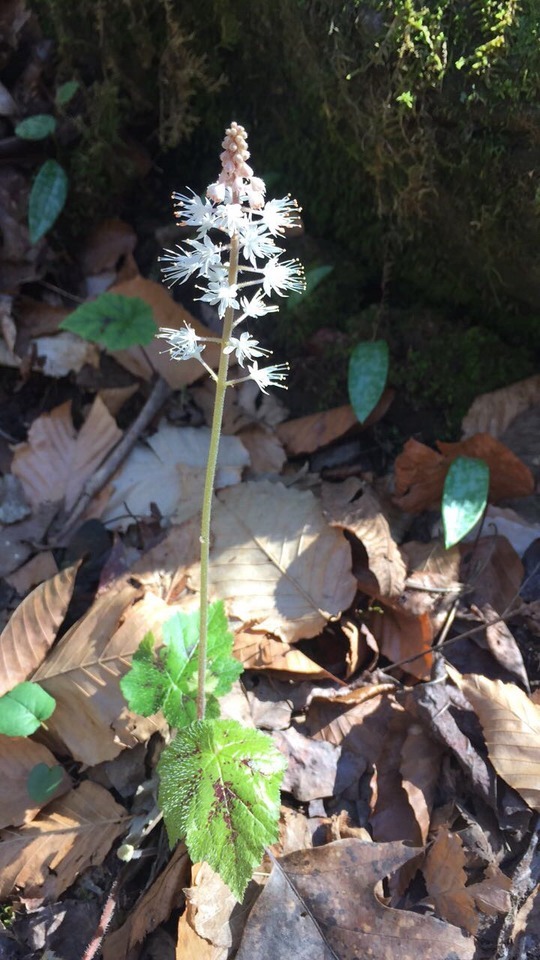
Heartleaf Foamflower or Coolwort
Tiarella cordifolia
Saxifragaceae
0 notes
Text


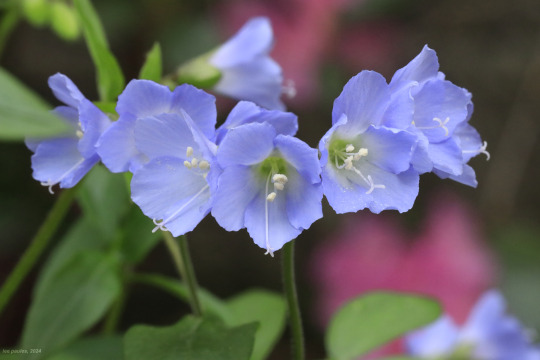









Update on the native wildflower shade garden . . .
Since my last post about the sharp-lobed hepatica several weeks ago, the wildflowers in the shade garden have made a significant push. All of the live plants I put in the ground last fall have made it through the winter, and many of the seeds I planted have germinated and sprouted. Quick survey:
Top: the spreading Jacob's ladder (Polemonium reptans) is mounding beautifully and positively dripping with violet-blue, bell-shaped flowers. The plant lures many pollinators, including bees, flies, butterflies, moths, and beetles. And that foliage is so lush and green . . .
Next one: woodland stonecrop (Sedum ternatum) has established itself in the nooks and crannies of one of my rock features and is getting ready to bloom.
Next two: although the sharp-lobed hepatica (Hepatica acutiloba) has nearly finished blooming, the real joy starts for me when the leathery, thrice-lobed leaves with their often deeply-variegated patterns begin to unfold. This is flat-out one of the most unique and gorgeous wildflowers of North America.
Next one: creeping woodland phlox (Phlox stolonifera) makes for an enchanting ground cover and will spread quite rapidly in the right conditions. I have strong feelings for all the native phlox species, but this one has stolen my heart. It's native to a narrow strip of the Appalachian Mountains from Georgia to Pennsylvania. In the spring around here, it absolutely lights up streambanks with its dainty pink to rose-colored flowers.
Next one: dwarf-crested iris (Iris cristata) is another lovely groundcover but beware - it spreads like wildfire. The lavender and yellow to orange-crested flowers are a treasure to behold from late April to early May. And its arrow-like foliage provides much-needed contrast in the garden.
Next: among the seeds I planted, the yellow pimpernel (Taenidia integerrima) is making the strongest push. The plant produces yellow-flowered umbels similar to golden Alexanders and is a high-value nectar source for many pollinators. It's also the host plant for the black swallowtail and Ozark swallowtail butterflies.
Next two: anyone who visits this Tumblr regularly needs no introduction to heartleaf foamflower (Tiarella cordifolia), my unofficial poster child for Appalachian spring. I simply would not have a native wildflower garden without it. One of my foamflowers is a hybrid (sugar and spice) cultivated for its deeply dissected leaves and intense variegation.
Last (but not least): my eastern red columbine (Aquilegia canadensis) pretty much takes cares of itself - it's one of the best starter wildflowers for beginner gardeners, hardy and undemanding. But man, does it produce loads of beautiful red and yellow, bell-shaped flowers.
#appalachia#west virginia#vandalia#flora#spring#native wildflowers#shade garden#native wildflower garden#spreading jacob's ladder#woodland stonecrop#sharp-lobed hepatica#creeping woodland phlox#dwarf-crested iris#yellow pimpernel#heartleaf foamflower#eastern red columbine
41 notes
·
View notes
Text
Wild Flowers PT. 3

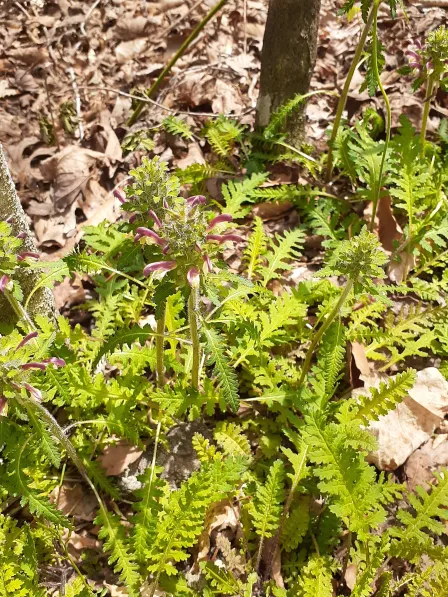

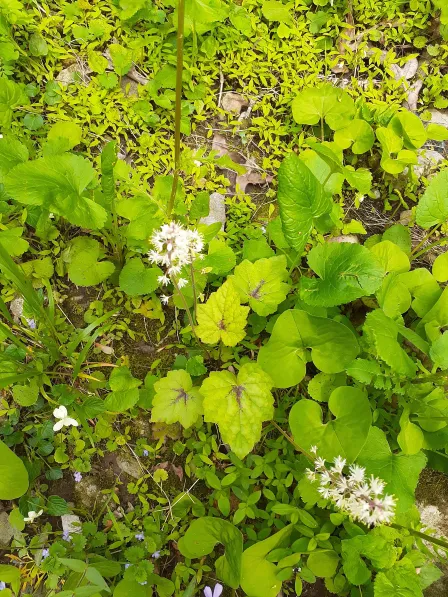
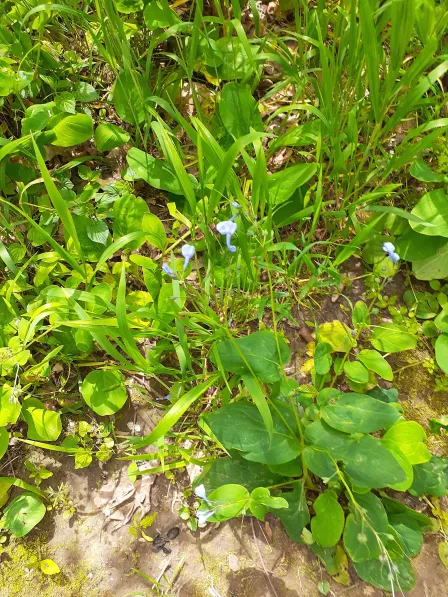
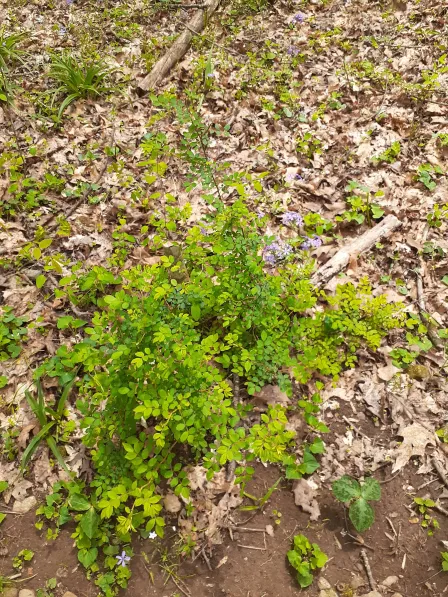


First Image: Virginia Spring Beauty
Second Image: Canadian Wood Betony
Third Image: Krigia Biflora
Forth Image: Heartleaf Foamflower, Striped Cream Violet, and Blue Phlox
Fifth Image: Cipura paludosa
Sixth Image: Blue Phlox and Wild Lime
Seventh Image: American Holly
#nature#woods#forest#flowers#pink flowers#blue flowers#purple flowers#white flowers#yellow flowers#holly bush#mayapple#mayapple plant#trees#spring#early spring#my photos#virginia spring beauty#canadian wood betony#krigia biflora#heartleaf foamflower#striped cream violet#blue phlox#cipura paludosa#wild lime#american holly
5 notes
·
View notes
Text

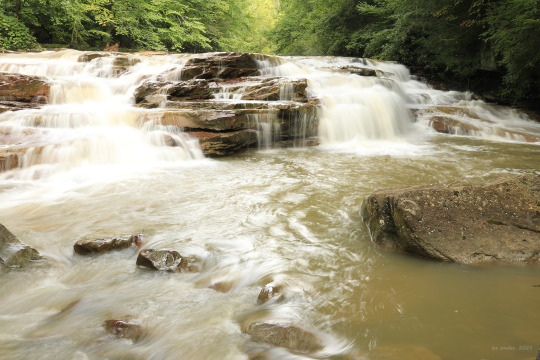


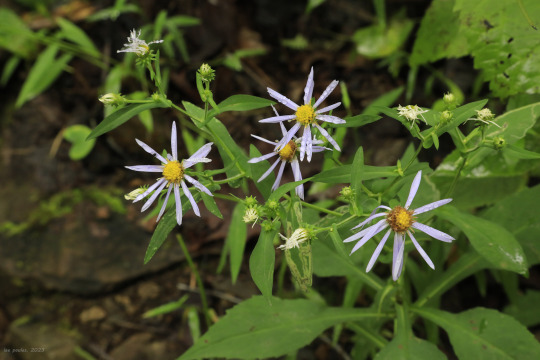
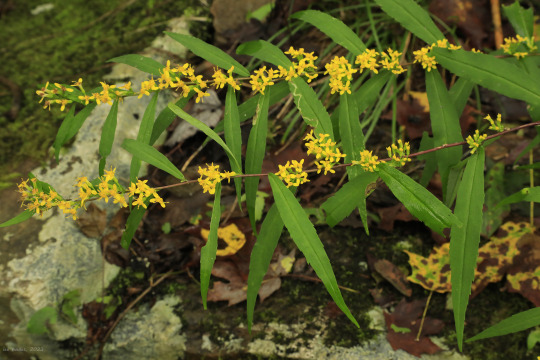
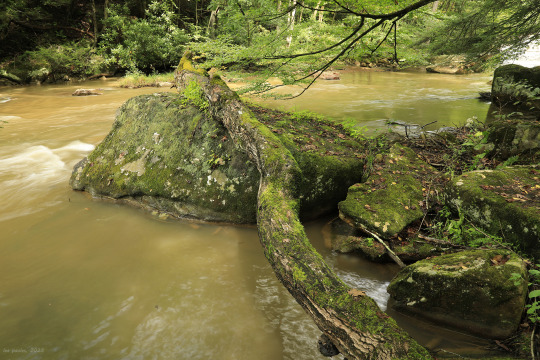
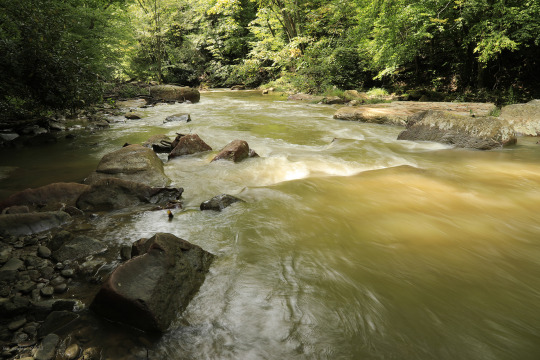
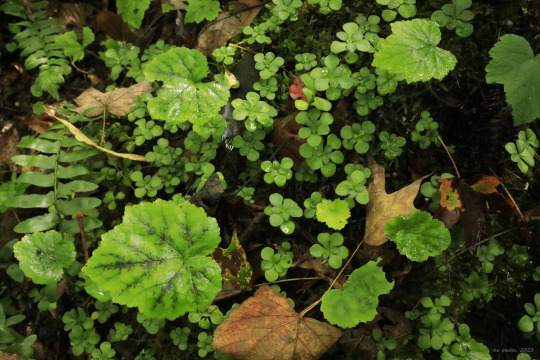

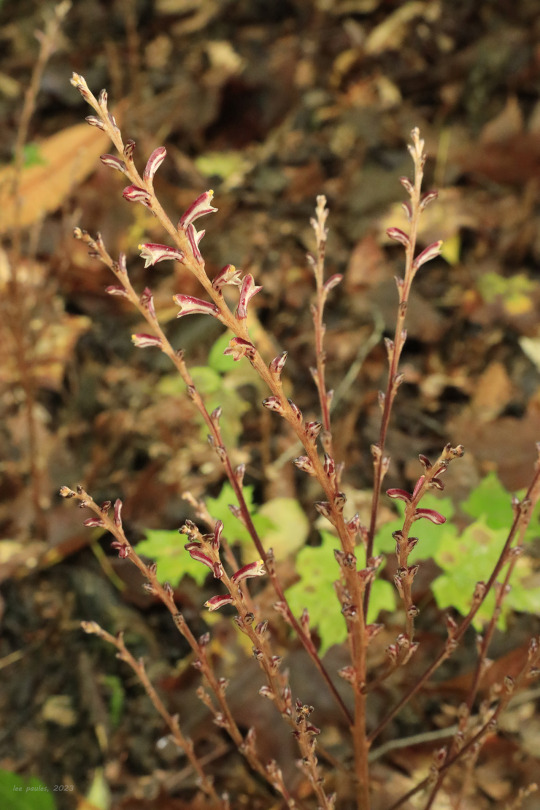
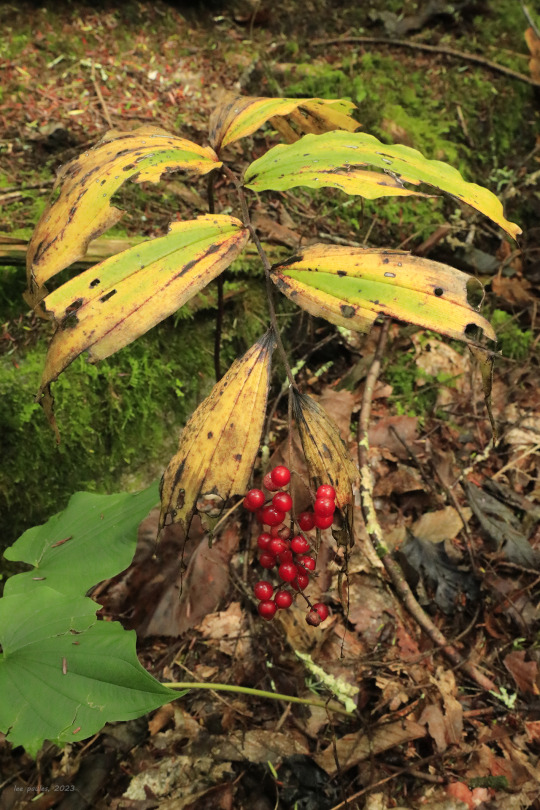
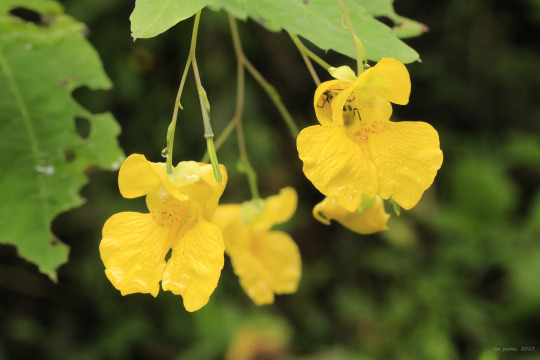
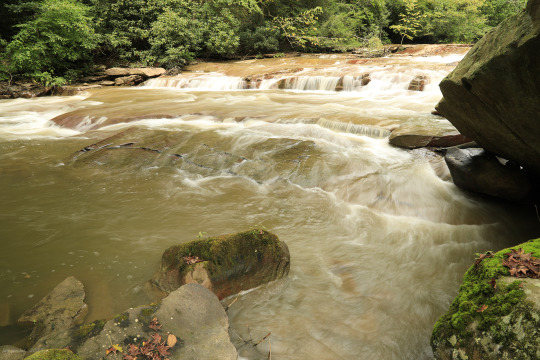

Despite its undignified name, Muddy Creek is a lovely mountain stream that normally runs fast and clear on its steep descent to Cheat River. But after a week of heavy rain in NC-WV, the stream looked a bit murky yesterday. Not even the sediment washing away from the mountains dims its beauty in my eyes. And the enchanting, moss-encrusted forest along its bank holds its own late summer treasures.
From top: great blue lobelia (Lobelia siphilitica), which pairs beautifully with cardinal flower to provide late summer color in a native wildflower garden; white wood aster (Eurybia divaricata), which is the most common of the shade-loving white asters in this area; crooked-stemmed aster (Symphyotrichum prenanthoides), also known as zigzag aster, whose clasping, spatula-shaped leaves distinguish it from big-leaf aster, another woods-loving aster with lavender flowers; blue-stemmed goldenrod (Solidago caesia), whose spreading, yellow-flowered stems provide stunning late-season color in a native wildflower garden; an intensely-green collage of moss, woodland stonecrop (Sedum ternatum), Christmas fern (Polystichum acrostichoides) and heartleaf foamflower (Tiarella cordifolia), which I am trying hard to reproduce in my own native wildflower shade garden; the shaggy-maned stem of Coker's Amanita (Amanita cokeri), one of the most impressive mushrooms of Appalachia's summer forests; beech-drops (Epifagus virginiana), a parasitic plant that grows and subsists on beach tree roots; the bright red berries of false Solomon's seal (Maianthemum racemosum); yellow jewelweed (Impatiens pallida), whose explosive seed pods give the plant its other common name, pale touch-me-not; and narrow-leaved tick-trefoil (Desmodium paniculatum), also known as panicled tick-trefoil, a late summer pea whose sticky seed pods commonly hitch rides on shoes and boots.
#appalachia#vandalia#west virginia#wildflowers#flora#summer#muddy creek#cheat river#preston county#fungi#coker's amanita#great blue lobelia#white wood aster#crooked-stemmed aster#zigzag aster#blue stemmed goldenrod#woodland stonecrop#christmas fern#heartleaf foamflower#beech-drops#beech drops#false solomon's seal#solomon's plume#yellow jewelweed#pale touch-me-not#narrow-leaved tick-trefoil#panicled tick-trefoil#falls#rapids#mountain stream
103 notes
·
View notes
Photo

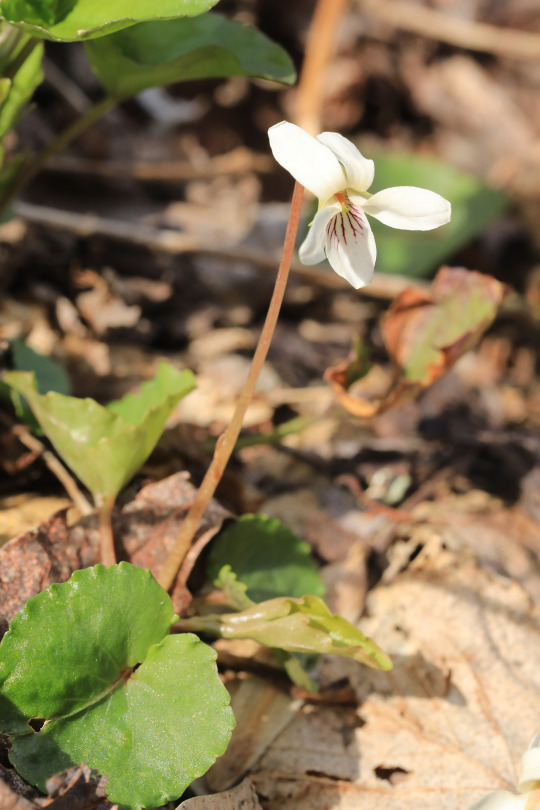
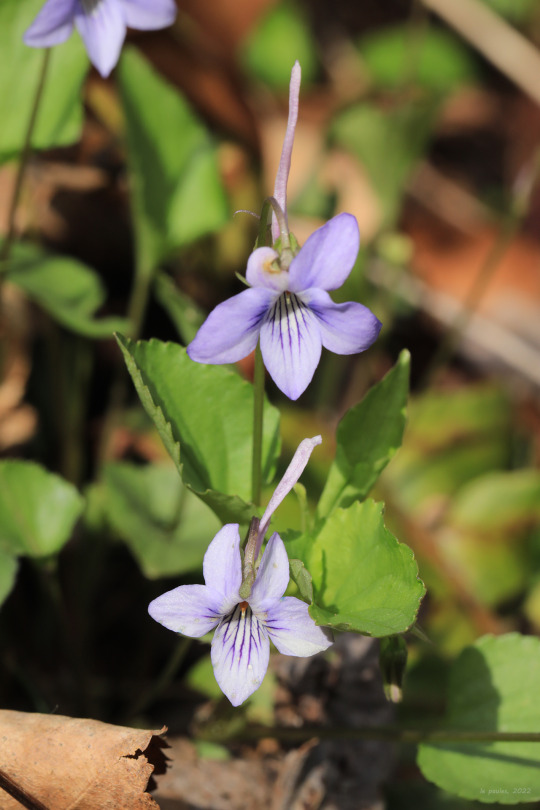
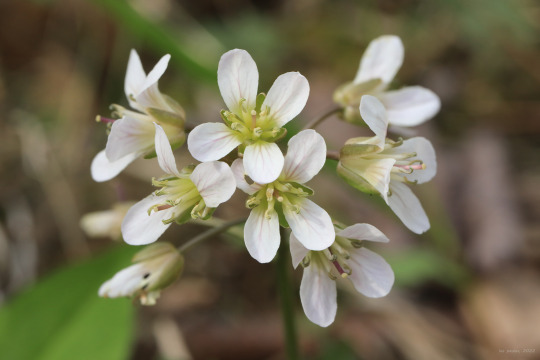
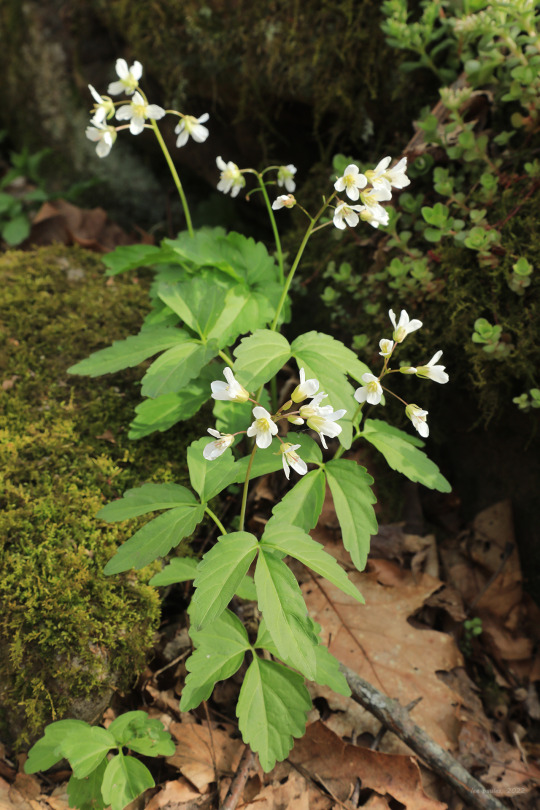


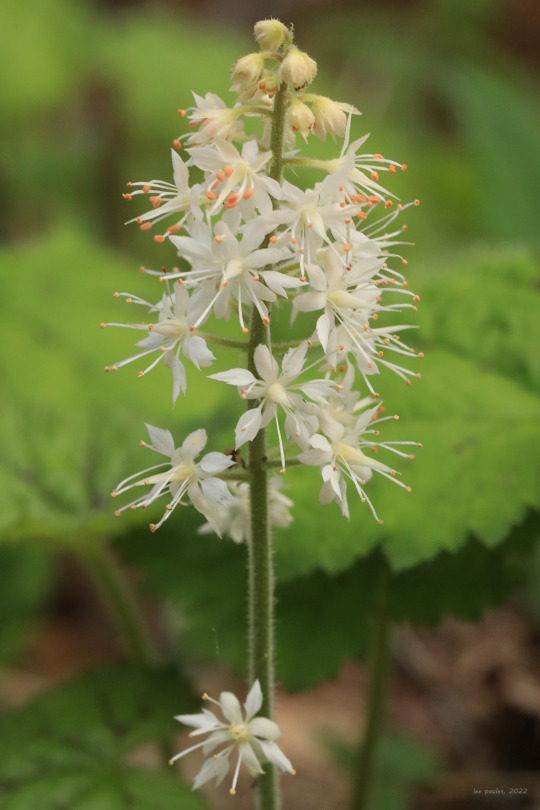
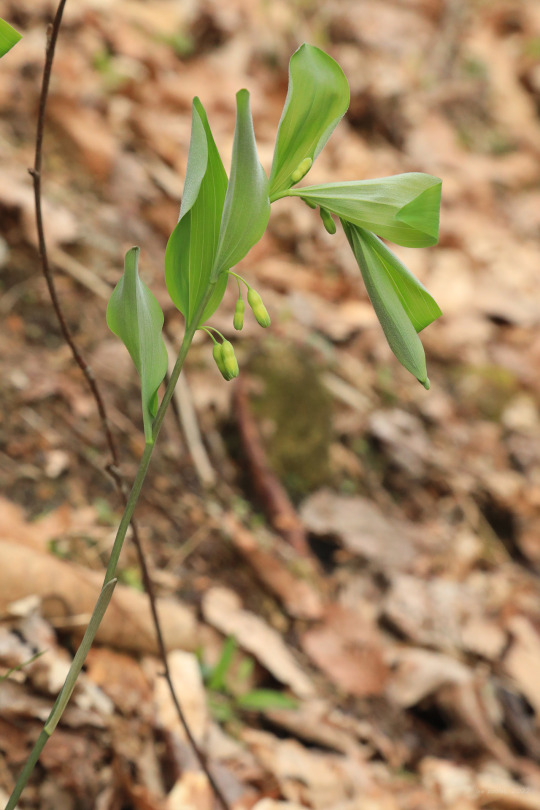
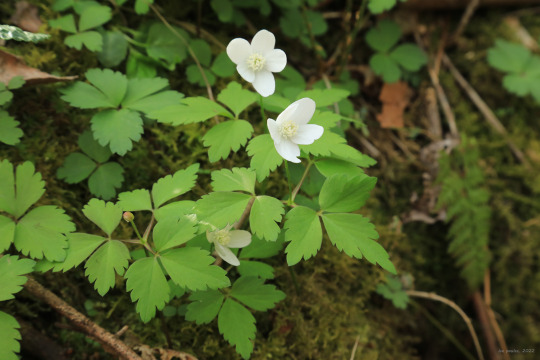
Early May in an Appalachian forest.
From top: sweet white violet (Viola blanda); long-spurred violet (Viola rostrata); broadleaf toothwort (Cardamine diphylla); wake robin (Trillium erectum), also known as red or purple trillium; heartleaf foamflower (Tiarella cordifolia); smooth Solomon’s seal (Polygonatum biflorum); and wood anemone (Anemone quinquefolia), also known as nightcaps.
#appalachia#vandalia#west virginia#spring#flora#wildflowers#viola blanda#sweet white violet#viola rostrata#long-spurred violet#cardamine diphylla#broadleaf toothwort#trillium erectum#wake robin#red trillium#purple trillium#tiarella cordifolia#heartleaf foamflower#polygonatum biflorum#smooth solomon's seal#anemone quinquefolia#wood anemone#nightcaps#coopers rock state forest
1K notes
·
View notes
Photo


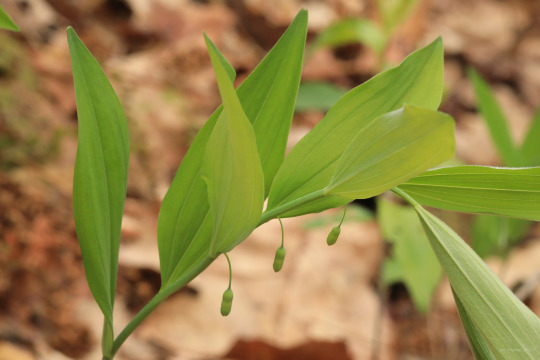

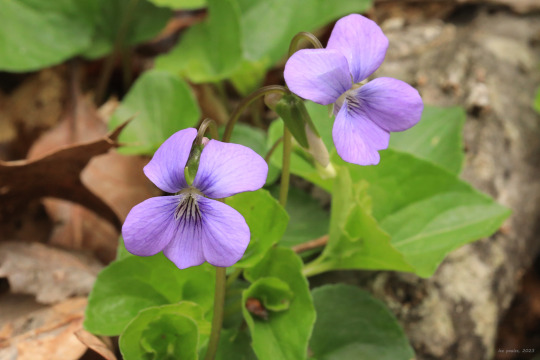





It was a dreary Saturday on Chestnut Ridge, but even the bleakest days are brightened by Spring’s dazzling gifts. From top: a wood anemone (Anemone quinquefolia) grudgingly unfolds its petals in search of sunlight; common sassafras (Sassafras albidum) shows off its yellow-green blooms; smooth Solomon’s seal (Polygonatum biflorum), whose pendulous flowers are near to bloom; the magnificent marsh blue violet (Viola cucullata Aiton), a lover of damp stream banks and bogs; heartleaf foamflower (Tiarella cordifolia), whose resplendent flower spikes are matched in beauty by its velvety, luxuriant foliage; and the fragile, sylph-like sessile bellwort (Uvularia sessilifolia), whose principle pollinator (Andrena uvulariae) specializes in this wildflower.
#appalachia#vandalia#west virginia#spring#late april#wildflowers#insect#bee#wood anemone#nightcaps#windflower#common sassafras#cinnamon wood#smooth solomon's seal#marsh blue violet#heartleaf foamflower#sessile bellwort#wild oats#mountain bellwort#coopers rock state forest#chestnut ridge
70 notes
·
View notes
Photo



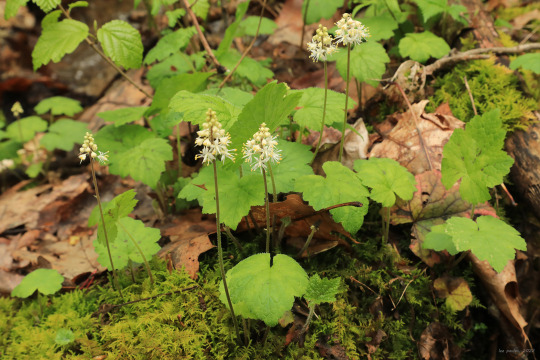

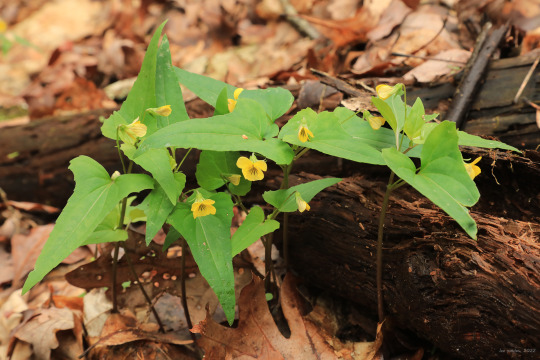
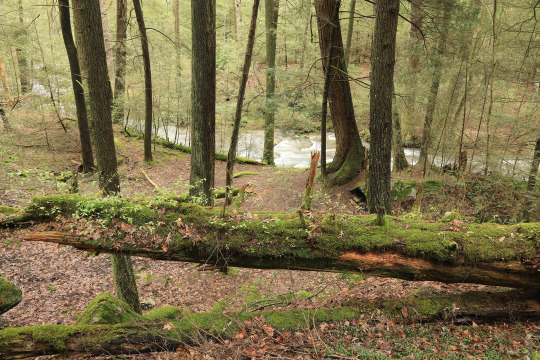

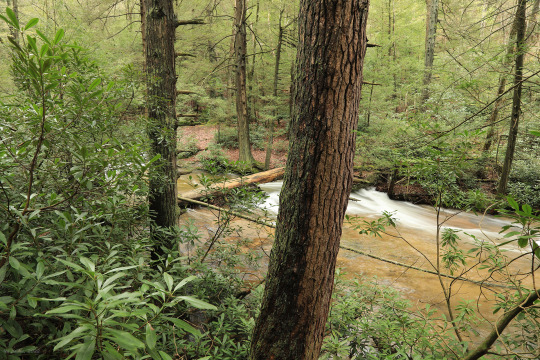

Eastern hemlock (Tsuga Canadensis) is sometimes referred to as the “redwood of the east”, and once-upon-a-time, this was absolutely the case; great expanses of virgin hemlock forest cooled headwater streams and created their own unique ecology. But these old growth forests are largely gone now, with only a few remnant stands scattered along the Appalachian spine. A spring hike through a pristine stand of these gentle giants is an experience to be treasured, providing a rare connection to a primeval world nearly lost to us.
From top: Painted trillium (Trillium undulatum), a lover of old hemlock and spruce forests and the most beautiful and delicate of all the trilliums to bloom in this area; marsh blue violet (Viola cucullata), a moisture-loving violet with club-like hairs at the throat of its flower; heartleaf foamflower (Tiarella cordifolia), which clumps gorgeously at the edges of seeps and brooks; halberd-leaved yellow violet (Viola hastata), an Appalachian endemic with sword-like leaves; and a red eft (Notophthalmus viridescens viridescens) on a perilous journey in search of a pond environment, where it will eventually transform into an adult newt.
#appalachia#vandalia#west virginia#spring#flora#wildflowers#coopers rock state forest#virgin hemlock trail#little laurel run#old growth forest#tsuga canadensis#eastern hemlock#trillium undulatum#painted trillium#painted lady#viola cucullata#marsh blue violet#tiarella cordifolia#heartleaf foamflower#viola hastata#halberd-leaved violet#halberd-leaved yellow violet#notophthalmus viridescens viridescens#eastern newt#red eft
178 notes
·
View notes